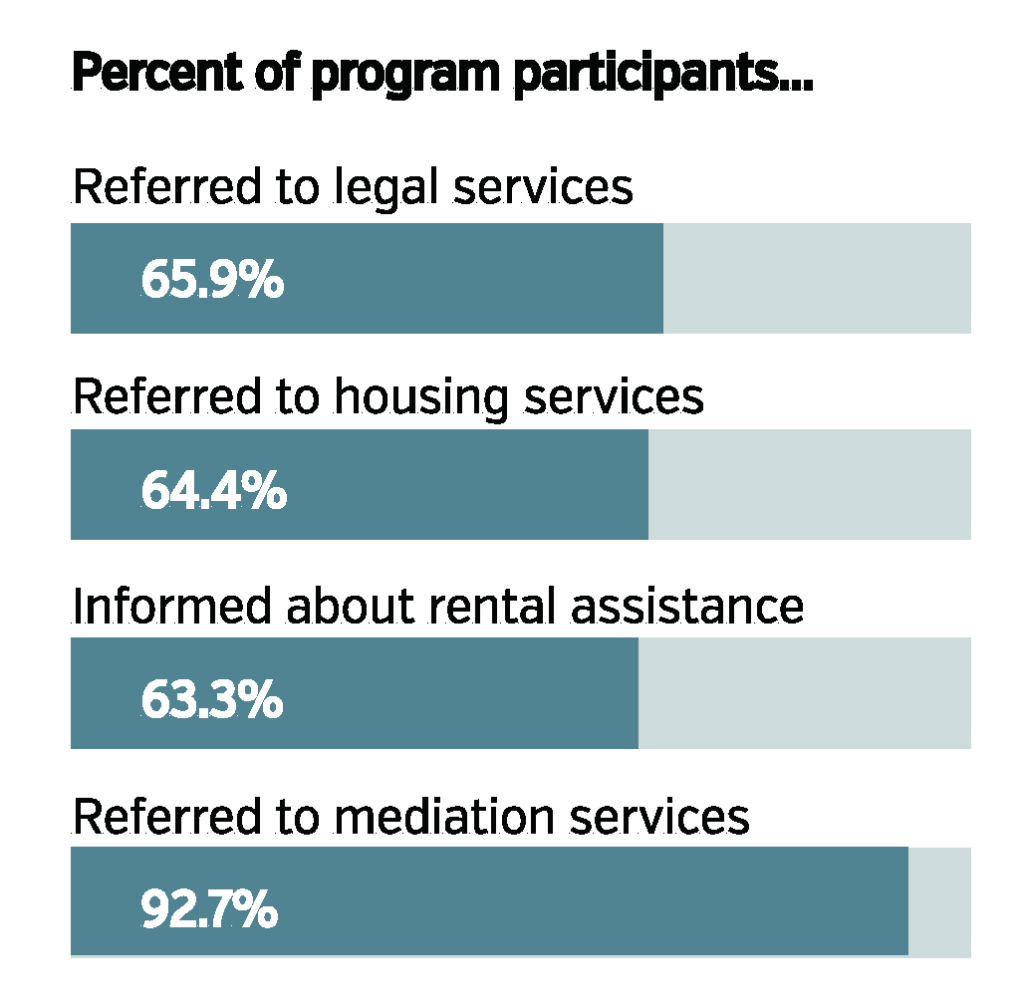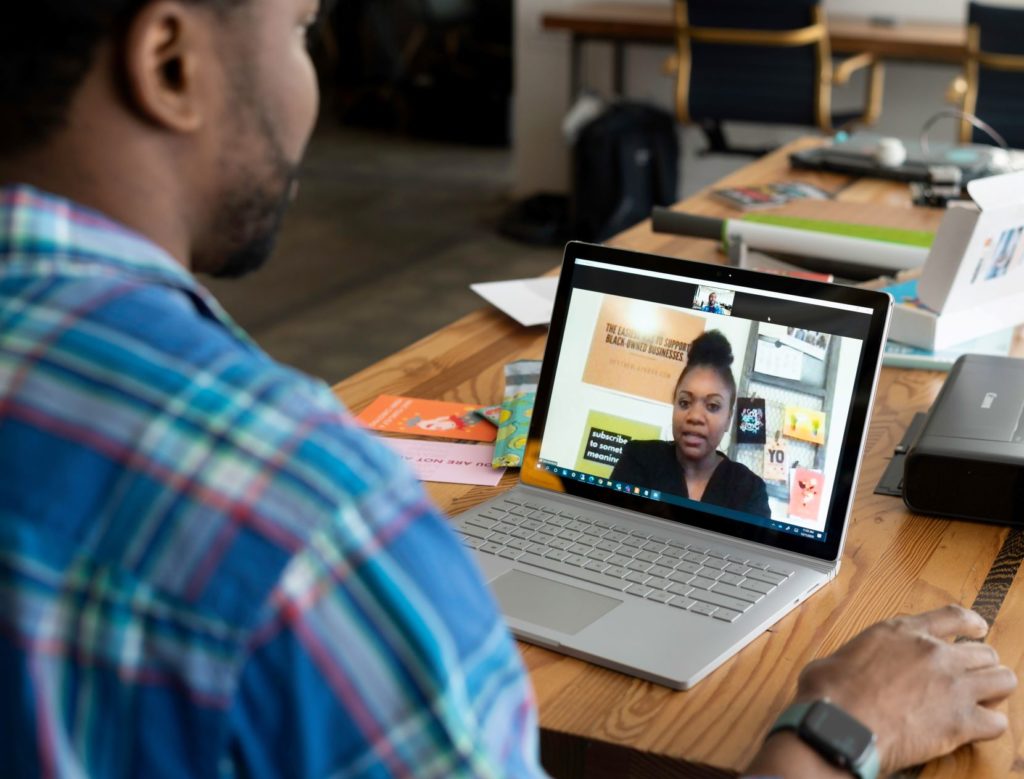Do you have a project that you started before the pandemic that you had to put on the back burner in the face of many urgent tasks? I did, but not anymore! I am thrilled to say that RSI’s report, “Family Court Online Dispute Resolution for Thinly Resourced Parents, Courts and Communities: Impediment, Improvement or Impossible Dream?” is now available online.
RSI is very grateful to the JAMS Foundation, whose generous funding made this project possible. We are also thankful to many others who contributed to the project, who you can learn about in the report.
Why RSI Did this Project
Having worked with court mediation in its early years, in recent years I have been witnessing similar responses to court online dispute resolution (ODR). There are proponents who see ODR as a great way to make court systems more accessible, less expensive and quicker. However, some also have significant concerns about issues such as whether ODR will be fair and accessible, who will pay for ODR and what might be lost by relying on technology.
RSI wanted to sort out whether family ODR could improve access to justice for thinly resourced parents who were in court over child-related issues (e.g., parenting time and decision-making), which we know is an area of great need in many jurisdictions. We were especially interested in how family ODR might work in jurisdictions and communities that were also thinly resourced.
Structure of the Project
We created a framework for the project. It is a series of steps – each building on the previous steps – that walks through a process of considering what it would take for family ODR to be accessible, ethical, effective, feasible and sustainable.
To work our way through that framework, we:
- Conducted research on the literature and the state of court ODR
- Surveyed state alternative dispute resolution (ADR) and ODR leaders
- Surveyed 37 national experts working in academia, ADR, court ADR, court administration, family law, funding, intimate partner violence, judging, legal aid, legal technology design, ODR, self-represented litigants and technology
- Convened those 37 experts three times
- Drew on RSI’s organizational experience
The data used in the report reflects the status of ODR in 2020. Because the project was already delayed by the pandemic, we decided not to continue to update the report as new programs were developed and new resources became available.
Tensions
Through the above work, we identified three tensions that must be resolved in order for family ODR to serve thinly resourced parents, courts and communities.
1. The desire to serve all parents is in tension with the limitations imposed by the thinly resourced environment explored in the project.
Courts have a responsibility to protect potentially vulnerable parents and ensure ODR is accessible and ethical. However, courts that are thinly resourced are unlikely to be able to provide the full range of services recommended by some experts to ensure ODR is accessible for all parents. The services include, for example, individualized education for each parent about their rights, personalized counseling for each parent about their best options, and one-on-one assistance while using ODR. Indeed, in our experience working with courts, it is likely that these thinly resourced courts would be looking for ways to reduce their costs by implementing ODR, not to increase costs because of a need for additional services to supplement ODR.
To address this tension, a safe tradeoff can be constructed by drawing on a long-established requirement of in-person family mediation. Prior to mediation, each parent must be screened individually to determine if a party has experienced intimate partner violence or other coercive behavior in the relationship that would make participation in a traditional mediation unwise. This need for screening is also true for family ODR.
This screening can be expanded to address the concerns specific to ODR, such as issues related to language, disability or access to the internet. The screener would assist the parents in finding ways to access ODR (e.g., how to involve a translator), would work with them to determine if mandatory participation in ODR is appropriate (e.g., in the case of an insurmountable barrier due to a serious illness or a violent relationship), and would help them access other suitable services when needed.
Screening some parents out of ODR will reduce the number of families that can benefit from ODR. However, it will also help to ensure that ODR is accessible and ethical for the parents who do participate.
2. There is a tension between the need for voluntary decision-making (to help make ODR ethical) and the need for participation (to help make ODR effective).
Neither the literature nor the gathered experts agree on whether mandatory or voluntary participation is inherently better. There is, however, a way to address this tension.
A safe tradeoff can be accomplished — as is sometimes the case with in-person family mediation — by requiring that parents who are not screened out of ODR try an initial ODR step. Because this comes after screening, it avoids requiring parents to use ODR if they are unable to participate in ODR or if they should not participate in ODR for any of a variety of reasons. It also increases the likelihood that a court ODR program will serve enough parents to make it effective by requiring that parents at least try ODR.
3. There is a tension between the cost of accessible, ethical, effective family court ODR and the ability of thinly resourced parents, courts and communities to pay for it.
The project pondered ways to resolve that tension, i.e., how to pay for quality court ODR. In the end, this tension could not be resolved. The project was unable to identify a feasible, sustainable path by which family court ODR could be provided nationwide to parents who need it via courts that cannot afford it.
Recommendations
The report resulted in nine recommendations.
1. Support family ODR
There is a need for family ODR despite the growth in family ODR and the availability of family ADR in some areas. There should be nationwide support for providing family ODR to thinly resourced parents, courts and communities.
2. Develop national standards for family court ODR
National standards for family court ODR should be developed and promoted. They should provide definitions; descriptions; guidance and, potentially, specific measurable criteria. The standards should articulate how to ensure family ODR is accessible, ethical and effective.
3. Consider how to assess whether family court ODR meets the standards
During the development of the standards, the question of how to assess whether court programs and vendors meet the standards should be addressed. For example, who would conduct the assessments? What would be the impact of any finding by the assessment?
4. Ensure every participant has a live conversation with a screener prior to ODR
There are situations in which some parents should not participate in ODR; therefore, every parent should engage in a live telephone or video conversation with a screener prior to using ODR. Together, they should explore whether: there was or is any intimate partner violence in the relationship; they have access to ODR; they are comfortable communicating in a language in which ODR is offered; they are comfortable with ODR technology; they are experiencing any mental illness or substance use issues that prevent them from participating in ODR; and they might need any accommodations as a result of disability.
5. Investigate the potential for a national program to conduct screenings
In many places across the country, parents are not routinely screened prior to family mediation. We see the same practice developing with family ODR. A national program is needed to offer screening that is affordable for thinly resourced parents and courts that cannot afford to pay screeners for ODR.
6. Require every parent who is not screened out of ODR to make an initial attempt to use ODR to identify areas of agreement with the other parent
Requiring parents to attempt to use ODR after screening will provide an ethical combination of screening parents out of, and mandating them into, ODR. It will encourage the maximum number of parents to try ODR, thereby increasing the opportunity for effectiveness, but not require parents who are unsuited to ODR to use it. Parents who do use ODR should not be required to reach agreement using it, but the experience of trying the initial step can also encourage parents to keep using ODR if they find it to be easy to use and helpful.
7. Provide guidance and model materials to courts developing ODR projects
Reliable, curated resources presented in an accessible format can help prevent courts from having to reinvent the ODR wheel. These resources could include, for example, guidance on how to determine what ODR processes and platforms to use, what standards to apply, how to select a vendor and what best practices are. These materials should also include model outreach and educational materials such as text for summonses, websites and communications with parents, as well as videos to which local court information could be added.
Courts also need assistance from experienced, knowledgeable experts to put those resources to work. Courts and communities with the least resources should be actively contacted, made aware of the resources, helped to assess whether there is a need for family ODR in their jurisdiction and, if there is a need, supported as they implement family ODR.
8. Enable courts to assess and improve their family ODR services
ODR platforms generally can provide regular statistical information on how ODR is functioning. Courts may need assistance determining what data they need, working with their vendor to obtain the data, and learning how to draw useful information for reports. Video mediation apps, such as Zoom, do not have built-in reporting mechanisms. Courts using video mediation will therefore need to devise other ways to collect critical data.
Courts also need to ensure parents are experiencing procedural justice when they participate in ODR. For courts using ODR platforms, this will likely require the insertion of surveys into the ODR system or the adaptation of surveys provided as part of the ODR platform. Courts using video mediation will need to survey parties about their mediation experience another way, e.g., by email or text.
Additionally, courts should participate in comprehensive program evaluations when possible. They should share results of these evaluations with other courts and with ODR providers to inform other ODR programs.
9. Investigate the potential for a national family court ODR provider
Although the project did not identify an entity that would be able to establish and sustain a national provider of family ODR, it is still possible that a resource-rich home for family ODR exists somewhere. Individuals and entities that are concerned with services to thinly resourced parents, courts and communities should explore whether there is a deep-pocketed funder who would commit to a multi-year national program.
Conclusion
This project investigated the study question, “How might family court online dispute resolution serve thinly resourced parents, courts and communities?” It found that family court ODR can be an impediment to access to justice if not provided in an appropriate manner. However, if it is provided in a manner that is accessible, ethical and effective, family court ODR can improve access to justice. Doing so will require standards for family court ODR, as well as resources to support the provision and evaluation of ODR. It will also necessitate comprehensive screening conversations with all parents prior to ODR, which will enable courts to require that all parents who are not screened out attempt at least an initial stage of ODR.
In the end, whether family ODR that is accessible, ethical, effective and feasible can be provided nationwide to parents who need it, despite limited family, court and community resources, remains an unanswered question and potentially an impossible dream. There is no clear path to determining how to sustain family court ODR services.





